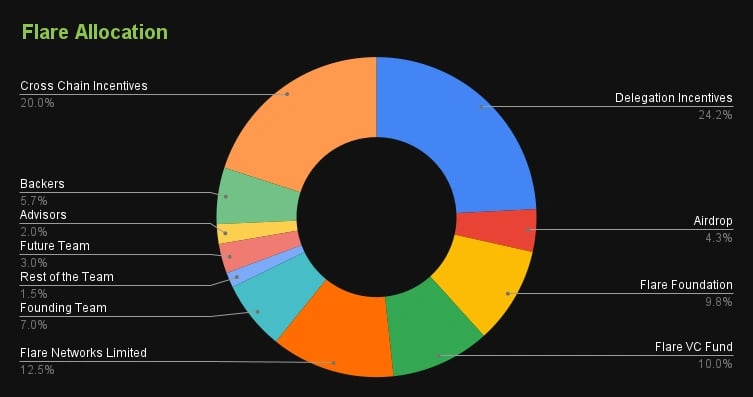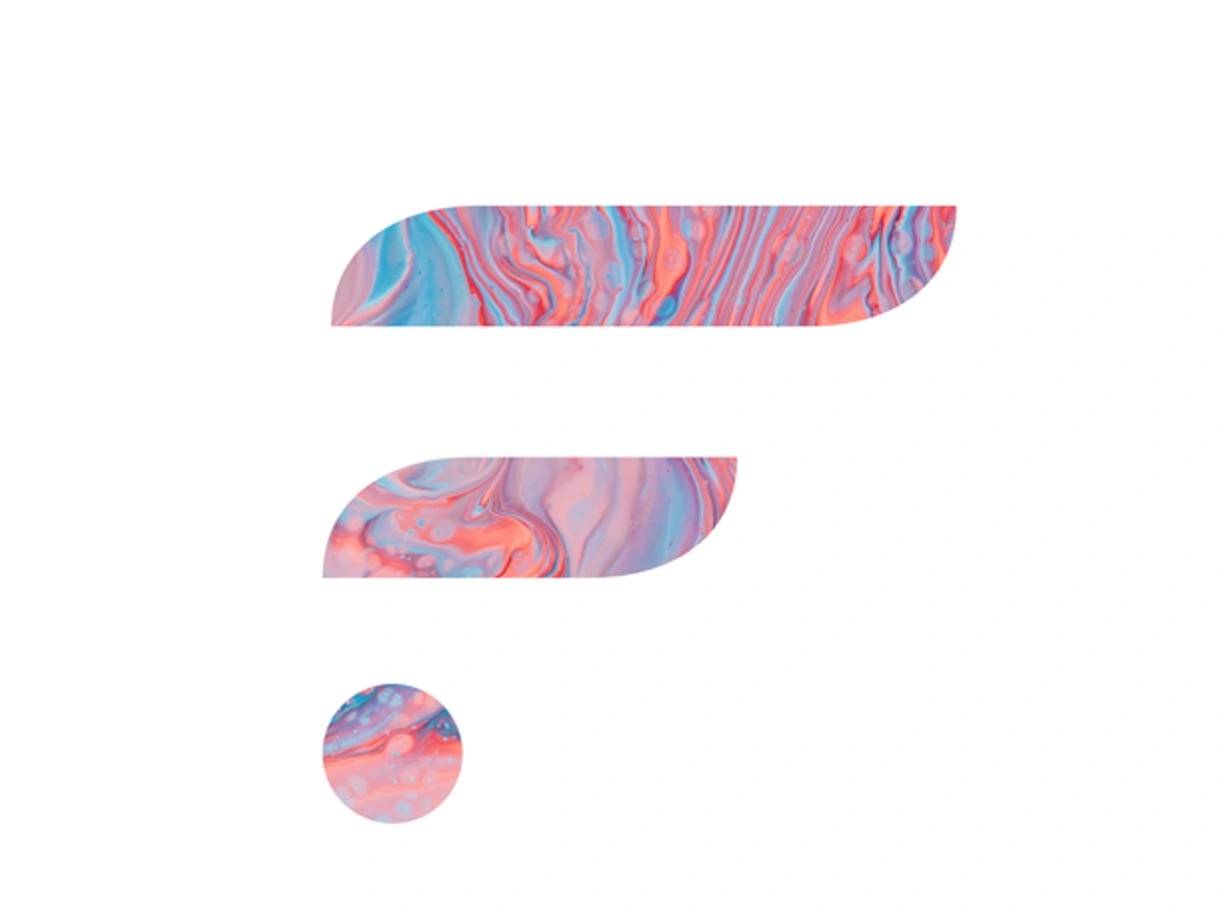위키 구독하기
Share wiki
Bookmark
Flare (FLR) Token
Flare (FLR) Token
플레어(FLR) 토큰은 플레어 생태계의 주요 토큰으로, 초기에는 스파크(Spark)로 알려졌으며, 인플레이션 속성을 가진 중요한 구성 요소입니다. 스마트 계약 실행, 거래 수수료 지불, FTSO를 통한 FLR 토큰 생성 등 다양한 기능에 활용됩니다. 안정적인 사용 비용을 유지하여 DeFi, NFT, 메타버스, 게임 등 다양한 애플리케이션을 지원하는 것을 목표로 합니다.[1][2]
토큰 분배
2020년 12월 XRP 보유자를 위한 초기 에어드롭 이후 FLR 토큰 분배는 초기 15%와 나머지 85%(2023년 1월 9일 플레어 토큰 분배 이벤트부터 36개월에 걸쳐)로 이루어졌습니다. FIP.01 승인 후, 남은 85%는 모든 Wrapped FLR 보유자에게 36회에 걸쳐 분배됩니다. 매월 WFLR 보유량에 따라 분배되며, 소각을 피하려면 90일 이내에 청구해야 합니다. FTSO 위임 보상과 유사하게, 제공업체는 자동 청구 기능을 제공할 수 있습니다.[3][4]

유틸리티
FLR의 핵심 목표는 거래 수수료를 통한 스팸 공격 방지 및 네트워크 효율 유지입니다. WFLR로 확장되어 DApp 담보, FTSO 위임 및 거버넌스 참여가 가능합니다. 플레어는 2022년 7월 14일 소프트 베타로 시작하여 9월 30일 공개 관찰 모드로 전환되는 단계적 출시를 진행했습니다.
일반적인 암호화폐 기능 외에도, FLR은 블록체인 오라클 및 dApp 거래 중 담보로 사용됩니다. LFR은 거버넌스 참여 및 네트워크 상호 작용을 가능하게 하며, 프로토콜 거버넌스에서 데이터 라우팅에 영향을 미칩니다.[5][6][7]
위임
플레어 타임 시리즈 오라클(FTSO)에 위임하는 것은 데이터 제공자에게 FLR 또는 SGB 토큰을 일시적으로 할당하여 분산형 데이터 전달을 지원하는 것을 의미합니다. 이 토큰은 인출하여 다른 용도로 사용할 수 있습니다. 위임자는 정확한 데이터 제공에 대한 데이터 제공자의 정확성과 토큰 위임 수준에 따라 보상의 일부를 받습니다. 플레어 FTSO 위임 보상은 3.5일마다 청구할 수 있으며, 송버드 보상은 매주 제공됩니다. [5]
플레어 드롭
플레어의 토큰 구조에서 285억 개의 FLR 토큰은 공개 배포를 위해 예약되어 있으며, 초기 15%는 2023년 1월 9일에 배포되었습니다. 나머지 242억 개의 FLR 토큰은 36개의 플레어드롭을 통해 매월 WFLR 보유자에게 배포됩니다. 첫 번째 플레어드롭은 2023년 3월 17일에 발생하여 약 6억 7천만 개의 FLR이 청구되었습니다. 플레어드롭에 참여하려면 이전 달에 지갑에 WFLR을 유지해야 하며, 적절한 지갑으로 이체해야 할 수도 있습니다. 이전에는 위임 인센티브 풀(Delegation Incentive Pool)로 알려졌던 플레어드롭은 36개월에 걸쳐 242.5억 개의 FLR 토큰을 네트워크에 적극적으로 참여하는 WFLR 보유자에게 할당합니다. WFLR이 포함된 활성화된 PDA를 보유한 사용자도 플레어드롭에 참여할 수 있으며, 메인 및 위임 계정 모두에서 청구할 수 있습니다. [5][8]
거버넌스
플레어의 거버넌스 모델은 플레어 재단과 커뮤니티라는 두 가지 주요 주체에서 비롯됩니다. 플레어 재단은 플레어 및 송버드 네트워크에 대한 변경 사항을 제안하며, FLR 및 SGB 토큰 보유자는 의사 결정 과정에 참여할 수 있습니다. 향후 추가 시스템을 통해 SGB 토큰 보유자는 송버드 네트워크에 대한 변경 사항을 제안할 수 있으며, 이는 플레어 개선 제안(FIP)으로 추가 구현될 수 있습니다.
이러한 포괄적인 접근 방식은 이해 관계자들이 변경 사항을 제안, 투표 및 실행할 수 있도록 권한을 부여하여 분산형 의사 결정 과정을 촉진하는 것을 목표로 합니다. 제안 유형에는 플레어 개선 제안(FIP)과 송버드 테스트 제안(STP)이 포함됩니다. FIP는 안정성을 우선시하여 승인을 위해 과반수 투표가 필요하며, STP는 신속한 테스트를 용이하게 하며 상당한 반대만 있을 경우에만 거부됩니다.
제안에 참여하려면 유효한 Wrapped 토큰을 보유해야 합니다. 투표 과정에는 발표, 공지 및 투표 기간과 같은 필수 단계가 포함됩니다. 승인된 제안은 플레어 재단에 의해 자동 또는 수동으로 실행될 수 있습니다. [9]
잘못된 내용이 있나요?
